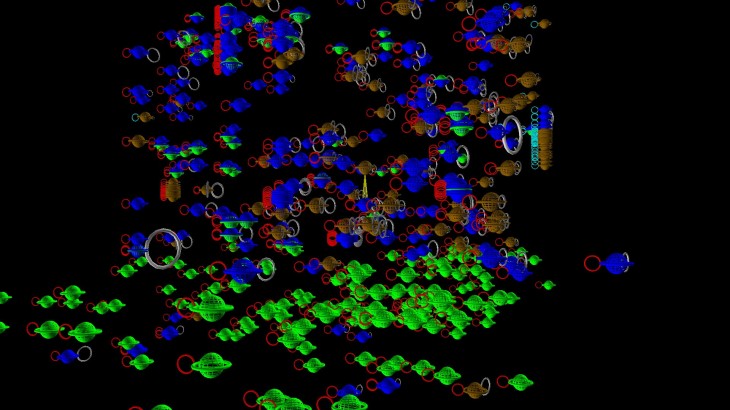Steven Johnson tries to analyze how to define emergence in some different scales. He tries to give example from the behavior of ants and its colonies, until the smallest scale of cells and DNA, and come back to bigger scale as city and its neighborhoods. Giving comparisons and similarities of how ants system works and characteristics of our cells and DNA are some-what interesting. Both of them have this emergence behavior as its nature way of living.
What is emergence, how to define logics in complex city, how interaction creates city, and what is the nature of complex system – those are the main ideas on what Johnson’s been writing from the beginning towards the end of the text.
From the example of small scale such as ants and its colonies also cells and DNA, he clearly lays out the complexity of every individual but with pattern they organized themselves and become a smart colony, an organism. That is one of the root example of how local information can develop global wisdom. Johnson points out 5 fundamental principles for this bottom-up system ; 1. More is different: large quantity of ants can give a statistic average to emerge, comparing just one or two ants, 2. Ignorance is useful: an individual unique characteristic of ant can be beneficial to its colony, 3. Encourage random encounter: different information or situation can develop the colony, they will adapt in any condition also modify their behavior, 4. Look for patterns in the sign: every ants work with their pheromones, smelling other trails, creating pattern of living, 5. Pay attention to the neighbor: individual colony can’t survive with their own, they need to have other neighbor to get information and guide them.
Colony is also the same as neighborhood in human scale. Cities are made by mass of quantity of neighborhood. All the principles shown above can be (or should be) implemented in any neighborhood. Neighborhood itself is a formation of process. Interactions define the quality of a neighborhood. While interaction need a place, in city scale, he points out sidewalk as one of the main tool. Sidewalk become the role part of the place of flowing information between residents. It is the learning passage of every neighbors. It creates the “complex order” of the city, not to make citizens well-rounded. We as the “citizens of sidewalk” have to define its quality. The strength of neighborhood, colonies, mega-organism, dependent on the type/ quality and numbers of the sidewalk. With that at starting point, we can work for the city process, being emergent intelligence, and that is we have the ability to store and retrieve information, also recognize and respond to patterns in human behavior.
———————————————————————————————————————————————————
These analysis somehow open my eyes and mind on how from microscopic lens can give learning lesson towards macro lens. From small as cells can teach as big as cities. The point of emergence is that the whole is greater than sum of parts. I’m interested also on learning to study on how random behavior, random actions can create some pattern and become a whole system. How complex order can somehow create organized emergence city. And how local knowledge can create global situation. As we know that successful organism tend to live in “big city”, they have this emergence behavior, the ability to process data and use to change information in a more succeeded approach.
Picture source :
http://www.edworlds.com/antz/toroids/angola/images/conflictdata4.jpg

